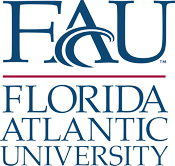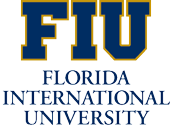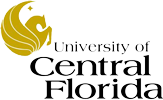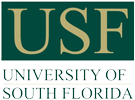Headline News Archive
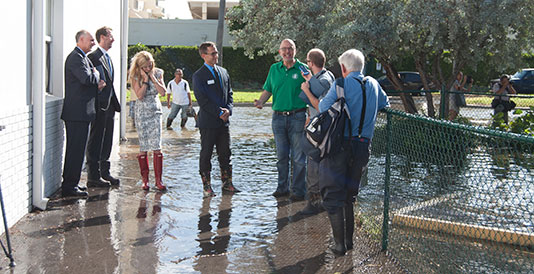 October 24, 2016 (Source: FAU/CES) - King Tide brought sunny day flooding to homes and businesses in South Florida this year, and communities want solutions. US Congressman Ted Deutch partnered with Dr. Colin Polsky, director of Florida Center for Environmental Studies at Florida Atlantic University, to bring awareness to the issue. Along with City of Fort Lauderdale commissioners, the Congressman received a briefing on impacts and adaptation strategies from private sector partners First Green Bank, Olive & Judd, and Florida Luxurious Properties, as well as the US Geological Survey, Broward County, Mitigat.com, Hollywood Lakes Civic Association, and Florida Atlantic University. The media were paying attention. Local CBS and ABC television stations covered the story, as did Sun Sentinel. “If standing in this water on a beautiful South Florida morning doesn’t tell us that it’s time we start investing in environmental infrastructure to protect our communities, then I don’t think anything will,” said Deutch. - NPR affiliate WLRN
October 24, 2016 (Source: FAU/CES) - King Tide brought sunny day flooding to homes and businesses in South Florida this year, and communities want solutions. US Congressman Ted Deutch partnered with Dr. Colin Polsky, director of Florida Center for Environmental Studies at Florida Atlantic University, to bring awareness to the issue. Along with City of Fort Lauderdale commissioners, the Congressman received a briefing on impacts and adaptation strategies from private sector partners First Green Bank, Olive & Judd, and Florida Luxurious Properties, as well as the US Geological Survey, Broward County, Mitigat.com, Hollywood Lakes Civic Association, and Florida Atlantic University. The media were paying attention. Local CBS and ABC television stations covered the story, as did Sun Sentinel. “If standing in this water on a beautiful South Florida morning doesn’t tell us that it’s time we start investing in environmental infrastructure to protect our communities, then I don’t think anything will,” said Deutch. - NPR affiliate WLRN
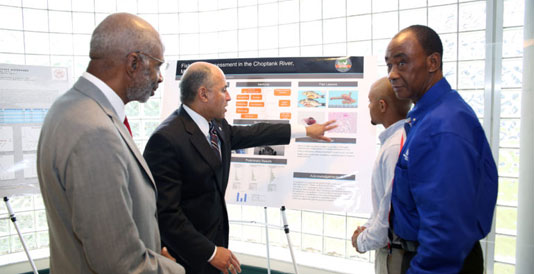 September 26, 2016 (Source: FAMU) - Today, Florida A&M University (FAMU) announced the receipt of a $15.4 million award over five years from the National Oceanic and Atmospheric Administration (NOAA) Educational Partnership Program (EPP) to establish the Center for Coastal and Marine Ecosystems (CCME). The new award will allow the FAMU-led partnership to make profound national impacts on coastal and marine ecosystems education, science, and policy.
September 26, 2016 (Source: FAMU) - Today, Florida A&M University (FAMU) announced the receipt of a $15.4 million award over five years from the National Oceanic and Atmospheric Administration (NOAA) Educational Partnership Program (EPP) to establish the Center for Coastal and Marine Ecosystems (CCME). The new award will allow the FAMU-led partnership to make profound national impacts on coastal and marine ecosystems education, science, and policy.
FAMU Distinguished Professor Larry Robinson, Ph.D., will serve as the CCME director and principal investigator. The interdisciplinary team at FAMU will include faculty and students from the College of Education, College of Science and Technology, College of Social Sciences, Arts, and Humanities, School of Business and Industry, and School of the Environment.
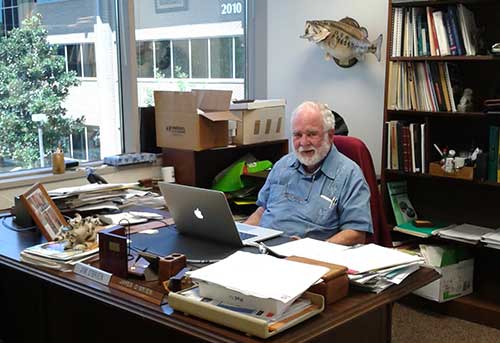 September 22, 2016 - We are tremendously saddened to inform the Florida Climate Institute community that Dr. James O'Brien, Professor Emeritus of Meteorology and Physical Oceanography at Florida State University and the founder of FSU's Center for Ocean-Atmospheric Prediction Studies (COAPS), passed away on September 20. Dr. O'Brien was a founding member of the Board of Directors of the Florida Climate Institute and a founding leader of the Southeast Climate Consortium. He served as State Climatologist of Florida at the Florida Climate Center from 1999 to 2006. Our memory of him remains as someone who was exuberant, approachable, and deeply committed to the mentorship of young scholars.
September 22, 2016 - We are tremendously saddened to inform the Florida Climate Institute community that Dr. James O'Brien, Professor Emeritus of Meteorology and Physical Oceanography at Florida State University and the founder of FSU's Center for Ocean-Atmospheric Prediction Studies (COAPS), passed away on September 20. Dr. O'Brien was a founding member of the Board of Directors of the Florida Climate Institute and a founding leader of the Southeast Climate Consortium. He served as State Climatologist of Florida at the Florida Climate Center from 1999 to 2006. Our memory of him remains as someone who was exuberant, approachable, and deeply committed to the mentorship of young scholars.
September 21, 2016 - Miami-Dade County has released a final status report in response to multiple resolutions pertaining to recommendations by the Miami-Dade Sea Level Rise Task Force.
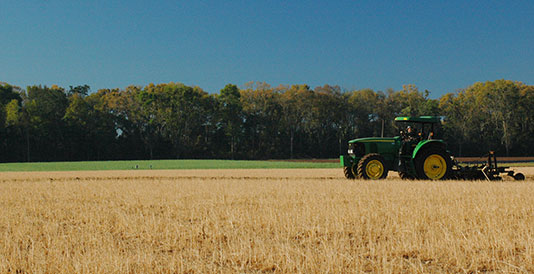 September 12, 2016 (Source: UF/IFAS) - Researchers with the University of Florida Institute of Food and Agricultural Sciences are closer to helping producers better meet global food demand, now that they’ve combined simulation and statistical methods to help them predict how temperature affects wheat crops worldwide. A global team of scientists, led by those at UF/IFAS, used two different simulation methods and one statistical method to predict the impact of rising temperatures on global wheat production, and all came to similar estimates. This finding, published in a study in the journal Nature Climate Change, is critical in predicting how much wheat and other crops we’ll need to feed the world, said Senthold Asseng, a UF/IFAS professor of agricultural and biological engineering and leader of this study.
September 12, 2016 (Source: UF/IFAS) - Researchers with the University of Florida Institute of Food and Agricultural Sciences are closer to helping producers better meet global food demand, now that they’ve combined simulation and statistical methods to help them predict how temperature affects wheat crops worldwide. A global team of scientists, led by those at UF/IFAS, used two different simulation methods and one statistical method to predict the impact of rising temperatures on global wheat production, and all came to similar estimates. This finding, published in a study in the journal Nature Climate Change, is critical in predicting how much wheat and other crops we’ll need to feed the world, said Senthold Asseng, a UF/IFAS professor of agricultural and biological engineering and leader of this study.
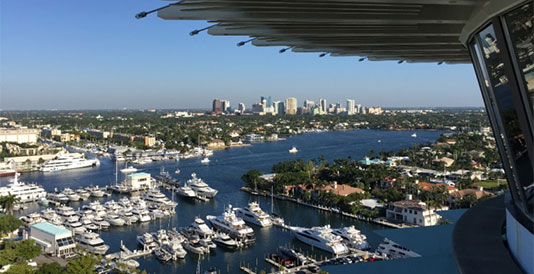 August 25, 2016 - The insights generated by FAU’s Arctic-Florida Sea-Level Rise Summit in May 2016 mark an important stage in the process of community engagement on sea-level rise and coastal erosion. “Adaptation Pathways 1.0” summarizes the 3rd Sea-Level Rise Summit organized by the Florida Center for Environmental Studies at Florida Atlantic University. The event, subtitled “Connected Futures from Alaska to Florida,” was held May 3-5, 2016, at the Ft. Lauderdale Hyatt Pier 66. In recent years, many conferences and meetings have identified the problems we face, and outlined some theoretical solutions. What we lacked was guidance for implementing specific adaptations. The goal of the Summit was to produce a first-generation roadmap for adaptation, by translating our knowledge and ideas into action. Our resulting Adaptation Pathways (see Section III of this report) have emerged as the product of intense and sustained interactions with Summit participants, representing a broad cross-section of society.
August 25, 2016 - The insights generated by FAU’s Arctic-Florida Sea-Level Rise Summit in May 2016 mark an important stage in the process of community engagement on sea-level rise and coastal erosion. “Adaptation Pathways 1.0” summarizes the 3rd Sea-Level Rise Summit organized by the Florida Center for Environmental Studies at Florida Atlantic University. The event, subtitled “Connected Futures from Alaska to Florida,” was held May 3-5, 2016, at the Ft. Lauderdale Hyatt Pier 66. In recent years, many conferences and meetings have identified the problems we face, and outlined some theoretical solutions. What we lacked was guidance for implementing specific adaptations. The goal of the Summit was to produce a first-generation roadmap for adaptation, by translating our knowledge and ideas into action. Our resulting Adaptation Pathways (see Section III of this report) have emerged as the product of intense and sustained interactions with Summit participants, representing a broad cross-section of society.
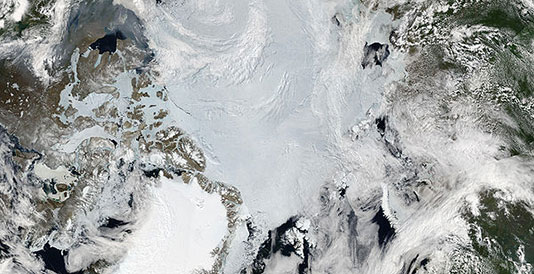 August 22, 2016 - A University of Alaska Fairbanks-led research project co-authored by Dr. Jeff Chanton (FSU) has provided the first modern evidence of a landscape-level permafrost carbon feedback, in which thawing permafrost releases ancient carbon as climate-warming greenhouse gases.
August 22, 2016 - A University of Alaska Fairbanks-led research project co-authored by Dr. Jeff Chanton (FSU) has provided the first modern evidence of a landscape-level permafrost carbon feedback, in which thawing permafrost releases ancient carbon as climate-warming greenhouse gases.
The project, led by UAF researcher Katey Walter Anthony, studied lakes in Alaska, Canada, Sweden and Siberia where permafrost thaw surrounding lakes led to lake shoreline expansion during the past 60 years. Using historical aerial photo analysis, soil and methane sampling, and radiocarbon dating, the project quantified for the first time the strength of the present-day permafrost carbon feedback to climate warming. Although a large permafrost carbon emission is expected to occur imminently, the results of this study show nearly no sign that it has begun.
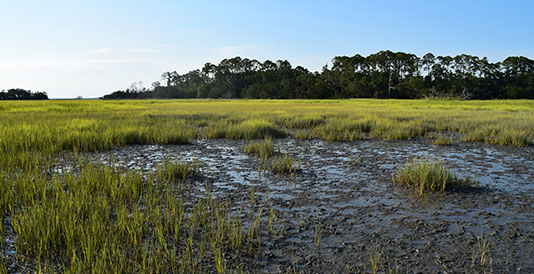 August 19, 2016 - Coastal ecosystems worldwide are feeling the heat of climate change. In the Southeastern U.S., salt marshes have endured massive grass die-offs as a result of intense drought, which can affect everything from fisheries to water quality. Now, new research shows that a mutualistic relationship -- where two organisms benefit from each other's activities -- between ribbed mussels and salt marsh grasses may play a critical role in helping salt marshes bounce back from extreme climate events such as drought.
August 19, 2016 - Coastal ecosystems worldwide are feeling the heat of climate change. In the Southeastern U.S., salt marshes have endured massive grass die-offs as a result of intense drought, which can affect everything from fisheries to water quality. Now, new research shows that a mutualistic relationship -- where two organisms benefit from each other's activities -- between ribbed mussels and salt marsh grasses may play a critical role in helping salt marshes bounce back from extreme climate events such as drought.
The results, reported this week in the journal Nature Communications, found that mussels piled up in mounds around salt grass stems helped to protect the grasses by improving water storage around their roots and reducing soil salinity. With the mussels' help, marshes can recover from drought in less than a decade. Without their help, it can take more than a century.
"This is a very good example of how the diversity of life in a salt marsh promotes resilience to climate and environmental change," said David Garrison, program director in the National Science Foundation (NSF) Division of Ocean Sciences, which co-funded the research with NSF's Division of Environmental Biology.
"It's a story of mutual benefit between marsh grass and mussels," said Christine Angelini, a scientist at the University of Florida and lead author of the paper. The mussels, she said, "protect then accelerate the healing of drought-stricken marshes."
August 3, 2016 - A new podcast is now available focusing on climate change adaptation. Learn how America is adapting to this challenge through informative and lively discussions with a mix of adaptation experts. Listen in as Doug Parsons talks to the scientists, planners, NGOs, and elected officials who have something to say about adapting to climate change. The podcast can be downloaded at America Adapts web site via iTunes, Google Play and more.
In Episode #4, Doug Parsons talks with Bob Glazer, research scientist with the Florida Fish and Wildlife Conservation Commission, about how Florida is adapting to climate change.
August 1, 2016 - Dr. Lydia Stefanova (FSU) will be collaborating with biologists from the USGS Wetland and Aquatic Research Center on a project entitled "Developing Weather and Climate-Based Environmental Indices for a Common Framework to Model Survival, Reproductive and Movement Rates of Sea Turtles, Gulf Sturgeon and Manatees in the Northern Gulf of Mexico (GoM)."
The research was funded by USGS to identify specific measures (indices) of climate stressors (extreme cold/heat/drought/flood during key periods of the year) that are pertinent to sea turtles,Gulf sturgeon, and manatees in the northern GoM. These measures in combination with historical data for the species' populations will be used to develop models for their survival, reproduction and movement. Eventually, these models, in combination with climate projections for the climate stressor indices, will be used to make projections for the future species populations under projected climate change.
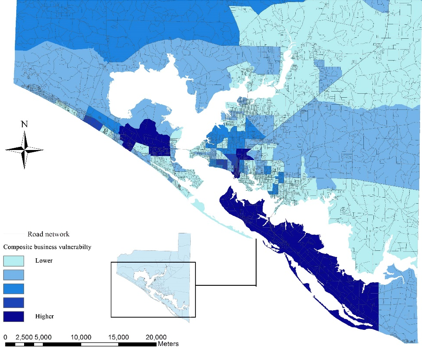 August 1, 2016 - A study conducted by a research team including members from University of Florida, Texas A&M University, and Virginia Polytechnic Institute and State University shows that business vulnerability to flooding will be escalated substantially by sea level rise. The findings show that considerable amount of areas, businesses, and road networks would be exposed to highest flood-risk zones due to sea level rise. To quantify the vulnerability of businesses to environmental hazards, the team established a conceptual framework of business vulnerability index incorporating business characteristics, infrastructure factors, and other indicators. A mapped index was displayed in Bay County, Florida.
August 1, 2016 - A study conducted by a research team including members from University of Florida, Texas A&M University, and Virginia Polytechnic Institute and State University shows that business vulnerability to flooding will be escalated substantially by sea level rise. The findings show that considerable amount of areas, businesses, and road networks would be exposed to highest flood-risk zones due to sea level rise. To quantify the vulnerability of businesses to environmental hazards, the team established a conceptual framework of business vulnerability index incorporating business characteristics, infrastructure factors, and other indicators. A mapped index was displayed in Bay County, Florida.
A research paper about this topic has been accepted for publication in the journal Natural Hazards. The paper is titled “Developing a theoretical framework for integrated vulnerability of businesses to sea level rise” and co-authored by Jie Song, Zhong-Ren Peng, Liyuan Zhao, and Chih-Hung Hsu.
Image caption: Composite Business Vulnerability Index in Bay County, Florida.
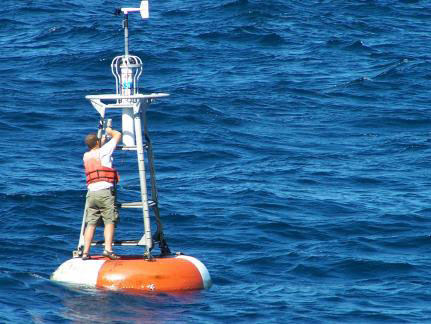 August 1, 2016 - With its latest update, NOAA's International Comprehensive Ocean–Atmosphere Data Set Release 3.0 (ICOADS R3.0) now incorporates a wide range of new and improved data and metadata sources. This new release also fosters closer integration with the oceanographic community by extending ICOADS observations to include near-surface variables—like salinity, nutrients, and dissolved carbonate chemistry—for the first time.
August 1, 2016 - With its latest update, NOAA's International Comprehensive Ocean–Atmosphere Data Set Release 3.0 (ICOADS R3.0) now incorporates a wide range of new and improved data and metadata sources. This new release also fosters closer integration with the oceanographic community by extending ICOADS observations to include near-surface variables—like salinity, nutrients, and dissolved carbonate chemistry—for the first time.
The Marine Data Center at FSU's Center for Ocean-Atmopsheric Prediction Studies has contributed to ICOADS R3.0. A manuscript (ICOADS Release 3.0: a major update to the historical marine climate record) detailing the new release and the contributions by the MDC (particularly providing a subset of high-quality research vessel observations from the SAMOS initiative) was just published in early view by the International Journal of Climatology. Mr. Shawn Smith, the Marine Data Center director, is a co-author on this manuscript and is the lead author of the full ICOADS release 3.0 documentation. Jocelyn Elya, MDC lead programmer, developed the software to support submitting SAMOS data into this release of ICOADS.
ICOADS is the world’s most extensive surface marine meteorological and oceanographic data collection. Building on extensive national and international partnerships, ICOADS provides users with easy access to many different data sources in a consistent format. Data sources range from early non-instrumental ship observations to more recent measurements from automatic systems, such as moored buoys and surface drifters.
ICOADS supports a variety of climate products including the global surface temperature record, winds, pressure, humidity, clouds, and estimates of air–sea exchange. We also use it to develop many other well-used sources of marine climate information, including reanalyses and gridded analyses of sea surface temperature.
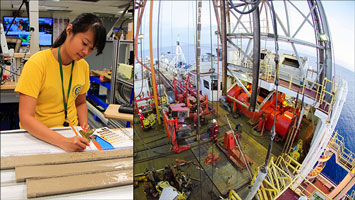 July 28, 2016 (Source: UM RSMAS) - A new study by an international team of scientists reveals the exact timing of the onset of the modern monsoon pattern in the Maldives 12.9 million years ago, and its connection to past climate changes and coral reefs in the region. The analysis of sediment cores provides direct physical evidence of the environmental conditions that sparked the monsoon conditions that exist today around the low-lying island nation and the Indian subcontinent.
July 28, 2016 (Source: UM RSMAS) - A new study by an international team of scientists reveals the exact timing of the onset of the modern monsoon pattern in the Maldives 12.9 million years ago, and its connection to past climate changes and coral reefs in the region. The analysis of sediment cores provides direct physical evidence of the environmental conditions that sparked the monsoon conditions that exist today around the low-lying island nation and the Indian subcontinent.
In Nov. 2015, University of Miami (UM) Rosenstiel School of Marine and Atmospheric Science geoscientist Gregor Eberli, along with his co-chief scientist Christian Betzler and an international team of 31 scientists from 15 countries, embarked on an eight-week expedition to the Maldives aboard the research vesselJOIDES Resolution. The scientific team on International Ocean Discovery Program (IODP) Expedition 359, which included UM geochemist Peter Swart and sedimentologist Anna Ling, extracted 3,097 meters of sediment cores that contain the history of the monsoon that is the most intense annually recurring climatic element on Earth. The monsoon system supplies moisture to the Indian subcontinent, which is important for the human population and vegetation in the region, as well as marine ecosystem in the surrounding seas.
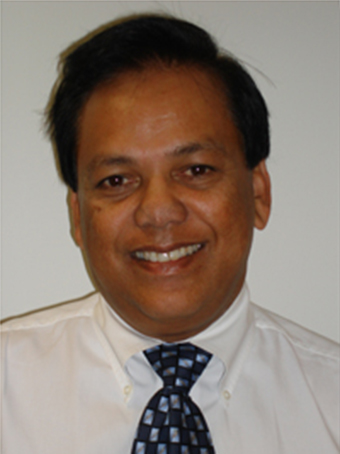 July 27, 2016 - The International Commission on Statistical Hydrology of the International Association of Hydrological Sciences (ICSH-IAHS) is awarding the 2016 Statistics in Hydrology (STAHY) Best Paper Award to Jose D. Salas of Colorado State University and Jayantha Obeysekera of the South Florida Water Management District for the following research paper:
July 27, 2016 - The International Commission on Statistical Hydrology of the International Association of Hydrological Sciences (ICSH-IAHS) is awarding the 2016 Statistics in Hydrology (STAHY) Best Paper Award to Jose D. Salas of Colorado State University and Jayantha Obeysekera of the South Florida Water Management District for the following research paper:
Salas, J. D., & Obeysekera, J. (2014). Revisiting the Concepts of Return Period and Risk for Nonstationary Hydrologic Extreme Events. J. Hydrol. Eng., 19(3), 554–568.
This is a new IAHS prize, recently introduced by the ICSH-IAHS Commission, that awards the most promising work in Statistical Hydrology among a large number of papers published in hydrological journals. The STAHY Best Paper Award 2016 will be assigned during the STAHY'16 Conference in Quebec City, September 2016.
July 27, 2016 - The National Oceanic and Atmospheric Administration (NOAA) has awarded $380,476 for a project led by researchers at FSU and NOAA/AOML titled, "Development of New Drifter Technology for Observing Currents at the Ocean Surface." Drs. Steve Morey, Nico Wienders, Mark Bourassa, and Dmitry Dukhovskoy (all of FSU), as well as Dr. Rick Lumpkin (NOAA/AOML), will develop and test a new satellite tracked drifter design for measuring currents at the very surface of the ocean. Typically, observations of "surface" currents really measure the current over the upper several meters, but these currents may be substantially different than the currents right at the surface. Through field experiments with these drifters together with more traditional upper ocean current observation methods, the researchers will gain a better understanding of the vertical structure of currents near the ocean surface. This work will benefit pollutant and debris tracking, air-sea flux measurements and modeling, and provide a tool for validating surface current measurements from future remote sensing instruments. The new drifter technology is anticipated to become available for widespread use and commercialization.
 July 27, 2016 - Dr. Andrea Dutton (University of Florida) has been elected a Fellow of the Geological Society of America (GSA). GSA members are nominated by existing GSA Fellows in recognition of their distinguished contributions to the geosciences through such avenues as publications, applied research, teaching, administration of geological programs, contributing to the public awareness of geology, leadership of professional organizations, and taking on editorial, bibliographic, and library responsibilities.
July 27, 2016 - Dr. Andrea Dutton (University of Florida) has been elected a Fellow of the Geological Society of America (GSA). GSA members are nominated by existing GSA Fellows in recognition of their distinguished contributions to the geosciences through such avenues as publications, applied research, teaching, administration of geological programs, contributing to the public awareness of geology, leadership of professional organizations, and taking on editorial, bibliographic, and library responsibilities.
Nominator Benjamin Horton (Rutgers University) said of Dr. Dutton: "Andrea displays enthusiasm and energy, as well as an encyclopedic knowledge of geology. She quotes the primary geoscience literature at will both historic as well as modern. This plus her creativity to isolate the basic mechanisms of sea level change is a rare and unbeatable combination."
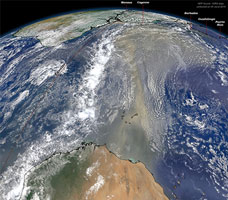 July 7, 2016 (Source: UM RSMAS) - Scientists at the University of Miami (UM) Rosenstiel School of Marine and Atmospheric Science are taking advantage of this year’s dust season to study the aging of these aerosol particles that travel across the Atlantic Ocean from Africa to Florida. The study will take place from 1 July to 31 August and will help improve weather and climate forecasts, including our understanding of the early development of tropical storms.
July 7, 2016 (Source: UM RSMAS) - Scientists at the University of Miami (UM) Rosenstiel School of Marine and Atmospheric Science are taking advantage of this year’s dust season to study the aging of these aerosol particles that travel across the Atlantic Ocean from Africa to Florida. The study will take place from 1 July to 31 August and will help improve weather and climate forecasts, including our understanding of the early development of tropical storms.
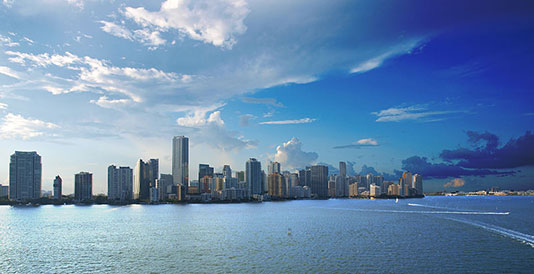 July 11, 2016 - The Florida Institute for Health Innovation (FIHI), in conjunction with the South Florida Regional Planning Council and Florida Atlantic University’s Center for Environmental Studies, mapped zones most prone to environmental sea level rise impacts, described associated public health risks and identified the region’s socially, economically and medically vulnerable communities most susceptible to sea level rise health effects.
July 11, 2016 - The Florida Institute for Health Innovation (FIHI), in conjunction with the South Florida Regional Planning Council and Florida Atlantic University’s Center for Environmental Studies, mapped zones most prone to environmental sea level rise impacts, described associated public health risks and identified the region’s socially, economically and medically vulnerable communities most susceptible to sea level rise health effects.
For the study, FIHI developed an innovative public health framework that links socio-economic vulnerability and health risks to climate change effects.
A result of two years of cross-sector research and outreach, the FIHI final report entitled Health and Sea-level rise: Impacts on South Florida includes a detailed discussion of the study’s multiple methodologies as well as a toolkit that can be used to inform adaptation, mitigation and infrastructure planning.
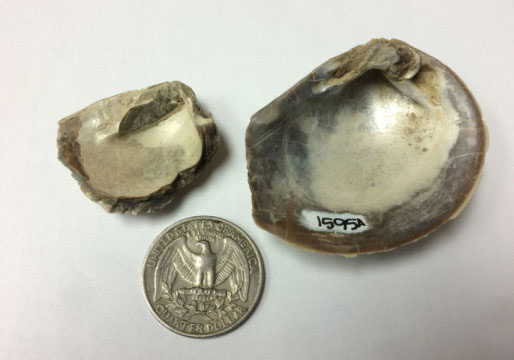 July 5, 2016 - A new reconstruction of Antarctic ocean temperatures around the time the dinosaurs disappeared 66 million years ago supports the idea that one of the planet's biggest mass extinctions was due to the combined effects of volcanic eruptions and an asteroid impact.
July 5, 2016 - A new reconstruction of Antarctic ocean temperatures around the time the dinosaurs disappeared 66 million years ago supports the idea that one of the planet's biggest mass extinctions was due to the combined effects of volcanic eruptions and an asteroid impact.
Two University of Michigan researchers and University of Florida colleague Andrea Dutton found two abrupt warming spikes in ocean temperatures that coincide with two previously documented extinction pulses near the end of the Cretaceous Period. The first extinction pulse has been tied to massive volcanic eruptions in India, the second to the impact of an asteroid or comet on Mexico's Yucatan Peninsula.
Both events were accompanied by warming episodes the team found by analyzing the chemical composition of fossil shells using a recently developed technique called the carbonate clumped isotope paleothermometer.
Nature Communications Journal Article
University of Michigan News Release
Image caption: The preservation of Cretaceous mollusk fossils from Seymour Island is excellent, with shells preserving original mother-of-pearl material as in these two specimens of Eselaevitrigonia regina. Image credit: Sierra V. Petersen



